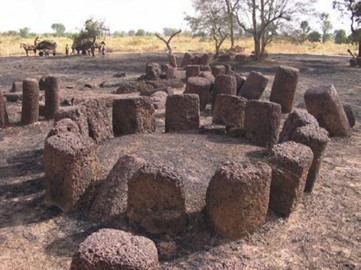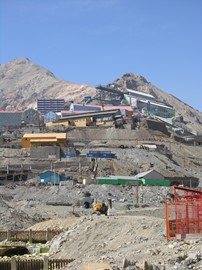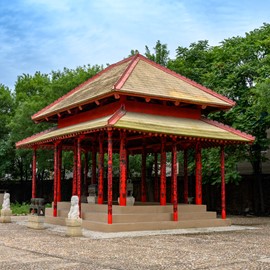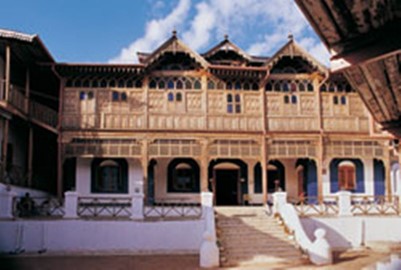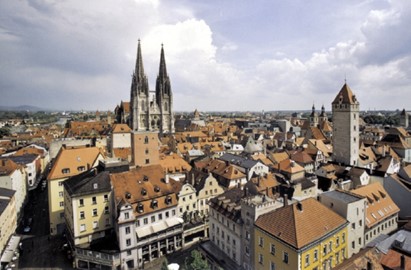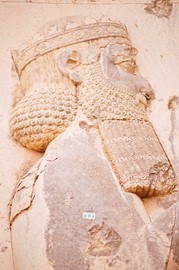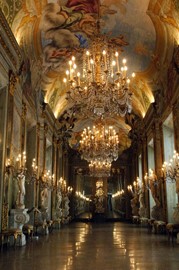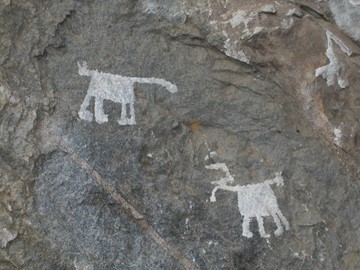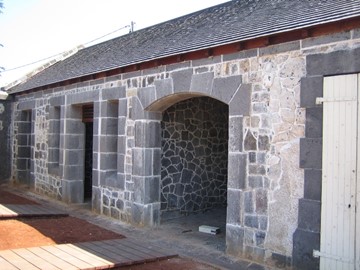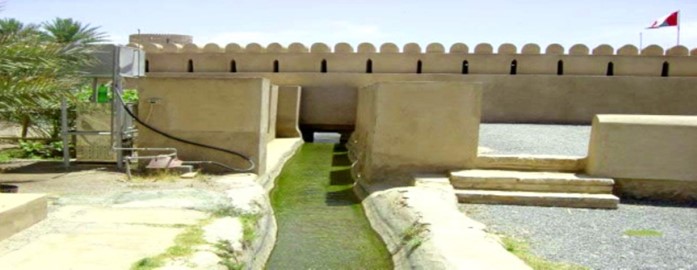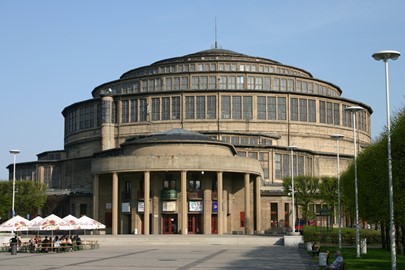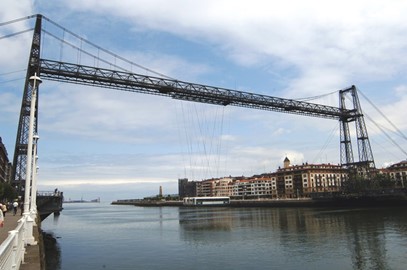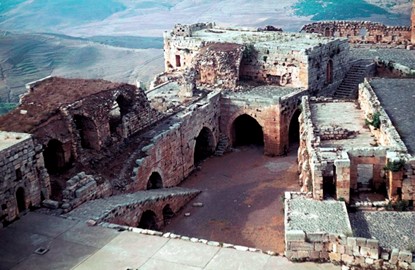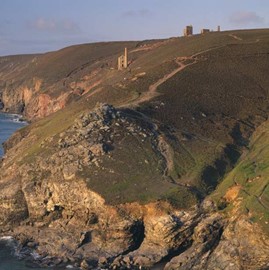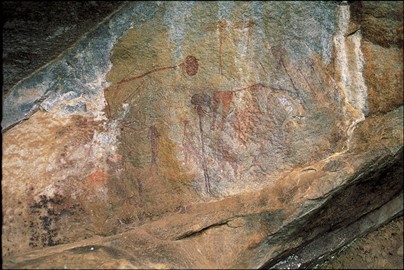year :: 2006
Stone Circles of Senegambia
The Stone Circles of Senegambia, a UNESCO World Heritage site in Gambia and Senegal, recognized in 2006, are over 1,000 megalithic circles across four sites, built between the 3rd century BCE and 16th century CE. Featuring laterite stone pillars arranged in rings, often near burial mounds, they reflect a mysterious ancient tradition of West African communities. This transnational site showcases the region’s archaeological heritage, offering a glimpse into a lost culture’s rituals and engineering skills.
Sewell Mining Town
Sewell Mining Town, a UNESCO World Heritage site in Chile, is an early 20th-century company town built into a steep Andean slope for copper miners. Its colorful wooden buildings, staircases, and industrial remnants showcase a unique urban design adapted to rugged terrain and a now-abandoned mining legacy. Recognized for its historical and cultural significance, it stands as a testament to Chile’s industrial past.
Yin Xu
Yin Xu, a UNESCO World Heritage site in China, is an ancient archaeological site revealing the ruins of a late Shang dynasty capital from over 3,000 years ago. Excavations uncovered royal tombs, palace foundations, and oracle bone inscriptions, the earliest known Chinese writing. This remarkable site offers critical insights into early Chinese civilization, urban planning, and bronze-age culture.
Sichuan Giant Panda
The Sichuan Giant Panda site, a UNESCO World Heritage site in China, is a vital conservation area protecting the iconic giant panda and its bamboo-rich habitat. Spanning lush forests and rugged mountains, it supports a diverse ecosystem with rare species like the red panda and snow leopard. This natural sanctuary highlights global efforts to preserve biodiversity and the beloved panda’s cultural significance.
Malpelo Fauna and Flora Sanctuary
The Malpelo Flora and Fauna Sanctuary, a UNESCO World Heritage Site in Colombia, is a remote marine park in the Eastern Tropical Pacific, renowned for its exceptional biodiversity. This protected area serves as a critical habitat for threatened marine species, including large aggregations of hammerhead and silky sharks, whale sharks, giant grouper, and billfish, thriving in an undisturbed environment. Its rugged underwater landscapes, featuring steep walls and caves, make it one of the world’s premier divin... Read More
Harar Jugol
Harar Jugol, a UNESCO World Heritage site in Ethiopia, is a fortified historic town renowned for its rich Islamic heritage and unique cultural blend. Enclosed by walls built between the 13th and 16th centuries, it features 82 mosques, including three from the 10th century, and over 100 shrines, earning it the title of Islam’s “fourth holiest city.” The town’s traditional Harari houses, with their distinctive interior designs, reflect a fusion of African and Islamic architectural influences, while its maze-l... Read More
Regensburg
Old town of Regensburg, a UNESCO World Heritage site in Germany, is a well-preserved medieval city renowned for its historical significance and architectural treasures. Founded by the Romans in 179 AD as a military camp, it evolved into a thriving trade center by the Middle Ages, boasting over 1,500 listed buildings, including the Gothic St. Peter’s Cathedral and the 12th-century Stone Bridge. Its old town, with narrow cobblestone streets and colorful facades, reflects a rich cultural heritage spanning near... Read More
Bisotun
Bisotun, a UNESCO World Heritage site in Iran, is renowned for its ancient rock reliefs and inscriptions dating back to 521 BCE. The site features a multilingual inscription by Darius the Great, carved into a cliff, which celebrates his victories and divine right to rule, written in Old Persian, Elamite, and Babylonian. Alongside this, the area includes archaeological remains from various periods, such as Parthian and Sassanian ruins, showcasing its historical significance as a cultural crossroads. Bisotun ... Read More
Genoa
Genoa's Le Strade Nuove and the Palazzi dei Rolli, a UNESCO World Heritage site in Italy, represent a pioneering urban planning and architectural ensemble from the late 16th and early 17th centuries. This historic district features elegant streets lined with grand palaces, originally built by the city’s aristocratic families to host distinguished guests. The innovative 'Rolli' system, a public lottery assigning lodging duties to these residences, highlights Genoa’s unique hospitality tradition and its statu... Read More
Chongoni Rock Art Area
This World Heritage site in Malawi features an exceptional concentration of ancient rock art, with over 120 sites showcasing paintings by hunter-gatherer and farming communities. Spanning thousands of years, the artwork reflects cultural traditions, rituals, and the spiritual beliefs of the people who once inhabited the region’s granite hills. Preserved by natural rock shelters, these vivid depictions offer a rare glimpse into the historical and artistic legacy of central Africa.
Aapravasi Ghat
Aapravasi Ghat, a UNESCO World Heritage site in Mauritius, served as an immigration depot from 1849 to 1923, where over half a million indentured laborers from India arrived to work on sugar plantations. Built in 1849, this historic complex includes remnants of the original structures like the steps, hospital block, and sheds, reflecting its role in the global migration of labor during the colonial era. It stands as a testament to the indentured labor system that shaped modern Mauritius and influenced plant... Read More
Tequila
The Agave Landscape and Ancient Industrial Facilities of Tequila, a UNESCO World Heritage site in Mexico, showcase a unique blend of natural and cultural heritage in Mexico. This region features expansive blue agave fields, cultivated for centuries to produce tequila, alongside historic distilleries and haciendas that reflect traditional production methods. Recognized for its significance in shaping tequila’s global identity, the site highlights the interplay between agriculture, industry, and cultural trad... Read More
Aflaj Irrigation Systems
The Aflaj Irrigation Systems, recognized as a UNESCO World Heritage site, are an ancient network of water channels that showcase Oman's ingenious engineering heritage. Dating back over 2,000 years, these systems use gravity to transport water from underground sources and springs to support agriculture and settlements in arid regions. Comprising a complex arrangement of tunnels, channels, and aqueducts, the aflaj demonstrate sustainable water management and communal cooperation, maintained through traditiona... Read More
Centennial Hall in Wroclaw
Centennial Hall in Wrocław, Poland, is an iconic World Heritage site renowned for its pioneering reinforced concrete design, completed in 1913 by architect Max Berg. Originally built as an exhibition hall to commemorate the centennial of the Battle of Leipzig, it features a distinctive symmetrical structure with a vast central dome, showcasing early 20th-century engineering innovation. Today, it serves as a multifunctional venue for cultural and sporting events, reflecting its enduring historical and archit... Read More
Vizcaya Bridge
The Vizcaya Bridge, a UNESCO World Heritage site in Spain, is an iconic transporter bridge completed in 1893, designed by architect Alberto de Palacio. It stands as a remarkable feat of industrial engineering, blending iron construction with innovative technology to ferry passengers and vehicles across the river via a suspended gondola. Recognized for its historical and architectural significance, it symbolizes the ingenuity of the late 19th century and remains operational today.
Crac des Chevaliers
Crac des Chevaliers, a UNESCO World Heritage site in Syria, is a remarkably preserved medieval castle built by the Knights Hospitaller in the 12th century. Renowned for its impressive Crusader architecture, the fortress features robust stone walls, towers, and intricate defensive systems, showcasing the military engineering of its time. It served as a key stronghold during the Crusades, symbolizing the power and influence of the Christian military orders in the region. Today, it stands as a testament to Syr... Read More
Cornwall and West Devon
This UNESCO World Heritage site in the UK is renowned for its historical significance and natural beauty. It features a dramatic landscape shaped by centuries of industrial mining, with remnants of engine houses, chimneys, and mineral-rich cliffs that highlight its pioneering role in the Industrial Revolution. The site also includes a world-class botanical garden, showcasing an extensive collection of plants from across the globe within iconic glasshouses. Together, these elements reflect a unique blend of ... Read More
Kondoa Rock Art
The Kondoa Rock-Art Sites, a UNESCO World Heritage Site in Tanzania, feature an impressive collection of ancient rock paintings found in natural shelters along the Masai escarpment. Created over millennia by hunter-gatherer and pastoralist communities, the artwork depicts elongated human figures, animals, and scenes of daily life, showcasing a unique streaky style and high artistic value. These sites also hold cultural significance, as some shelters remain part of local rituals, reflecting a living heritage... Read More
